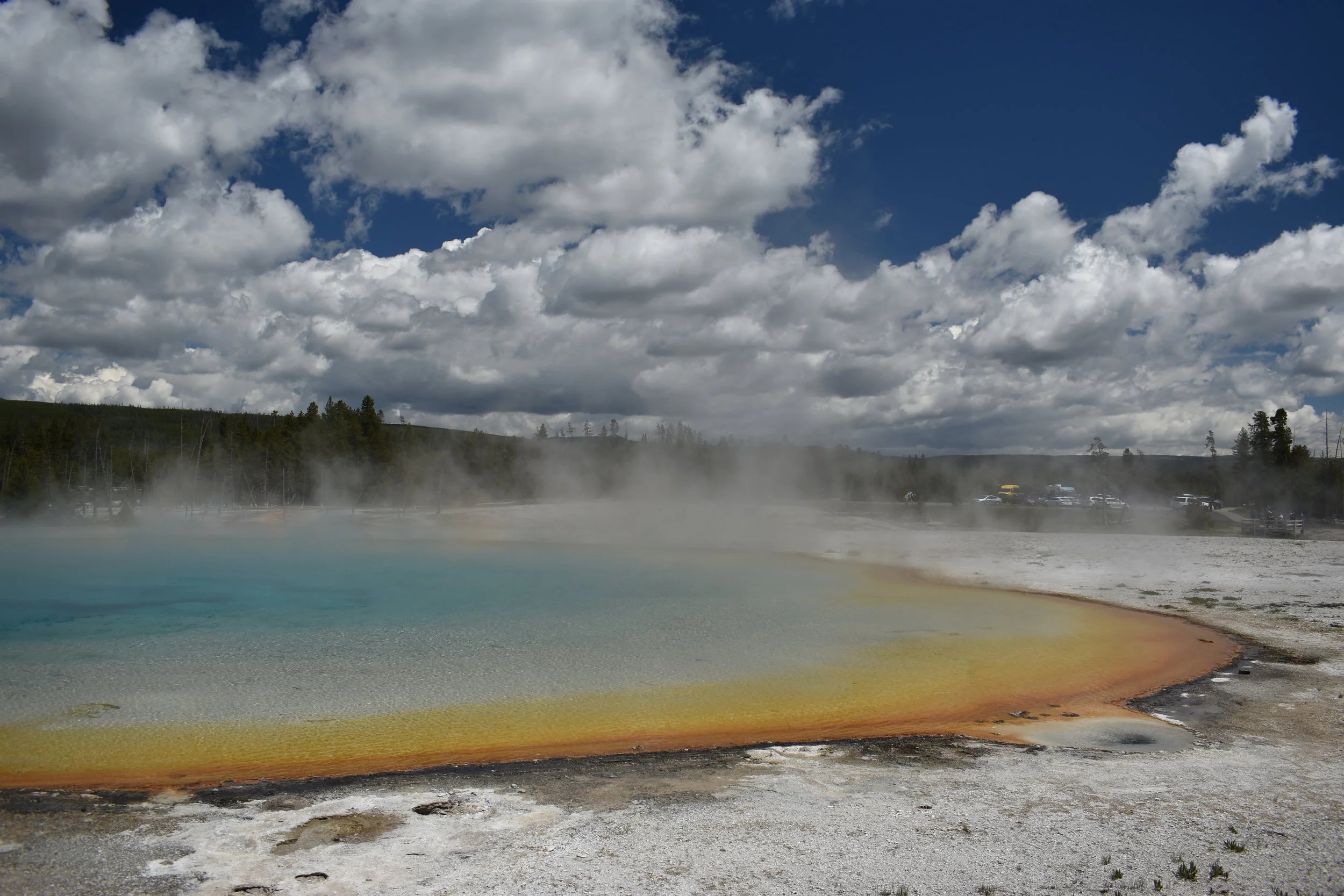While you might not think of Portland as a particularly volcanic area nowadays (especially compared to other western states like Wyoming), turn back time about 5 million years, and the story would be very different. In southeast Portland, nestled at the top of a quaint neighborhood is Mt. Tabor, an extinct volcanic vent and remnant of this volatile time in Oregonian history. Its cinder cone (a steep conical hill of loose pyroclastic fragments) is part of the Boring Lava Field, an extensive network of Plio-Pleistocene era cinder cones and small shield volcanoes ranging from Boring, Oregon to southwest Washington. This park was my destination for my second nature excursion in the city while visiting for the AWP 2019 Conference.
Read MoreWhile most of the trip was spent attending panels about writing (shout out to the amazing environmentalism in young-adult literature and humor in YA panels I went to) and teaching writing, I did manage to explore the crazy-good food options in the city (try: Screendoor, Butterfly Belly Asian Cuisine, and Salt & Straw ice-cream). Most importantly, though, I was able to sneak away for some nature excursions. The first of these was at Washington Park, one of the oldest parks in Portland, in the heart of the city.
Read MoreWhile these warmer spring temperatures are appreciated by everyone, myself included, the extreme temperature swing from a horrifically cold winter to an unseasonably warm (and snowless) March are undeniable effects of global climate change. Every spring hike this season will no doubt be tinged by this undercurrent of fear at the future state of the environment.
Read MoreTwo weeks ago, the Midwest was plunged into the newest polar vortex. While you read about Chicago setting train tracks on fire and Lake Michigan freezing, Minnesota was dealing with 40 mph+ winds, -35 degree temperatures, and -55 degree windchills. It was so cold that perfectly functioning cars with brand new batteries weren’t starting, and MSU, Mankato cancelled classes two days in a row. The only thing that compelled me to leave our apartment was to run my car for thirty minutes to keep the battery alive.
Read MoreOn a beautiful last day of summer weather a few weeks ago, Kayla and I decided we wanted to take full advantage of one of Minnesota’s best features: its lakes. After the somewhat lackluster experience sitting beside Spring Lake in Mankato, I did some Googling and found that there was a park with hiking and a lakeside beach less than a half hour away in Madison Lake, MN. So we packed our bags and headed out to Bray Park.
Read MoreThough you might not picture Minneapolis, MN, with its metro population topping 3.6 million, to be a haven for nature-lovers, that’s one of the best aspects of Minnesota: the state embraces and celebrates its natural beauty.
Read MoreLocated in St. Peter, about a twenty minute drive from Mankato, MN, is Gustavus Adolphus College, home to the Linnaeus Arboretum. This botanical wonderland was founded in 1973 by a botany professor at the college, Charles Mason, and his wife, Harriet Mason. The area is unique in that it incorporates all three of the major ecosystems in Minnesota: tall grass prairie, deciduous woods, and coniferous forest, allowing you to observe a wide variety of flora and fauna. With 130 acres, the arboretum gives plenty of room for you to wander, bring a picnic, or read on a bench surrounded by cascading blooms.
Read MoreLocated off of US 41 just outside L'Anse, MI (about an hour away from Marquette), there's an unassuming turnoff to a parking lot filled with cars. Today, our adventure crew consists of Kari, Kayla (her sister and my friend/now roommate!), and Kari's newest addition to the family, Kindi, a precocious 4-and-a-half-month-old lab/border collie mix whose name means "squirrel" in Swahili (even though she was actually named after a gorilla at the Louisville Zoo). A battered map shows that "Canyon Falls" is located on a single, straight-shot trail about a mile away.
Read MoreI can't believe I've been home a whole summer, and this is the first time I'm getting out to Red River Gorge! (I guess that's what happens when you work the old 8-5 Monday through Friday and spend every weekend wedding venue shopping.) Luckily, I had a day free during my last weekend in Kentucky, and what a better way to spend it than heading out to the Gorge. We decided to bring along Ryan's parent's puppy, Daisy, and try out a new trail: Pinch 'Em Tight.
Read MoreGrand Teton National Park is named for Grand Teton, the highest peak in the Teton range. The origins of the name are peculiar, dating back to 19th-century French-speaking trappers, who are said to have called the range les trois tétons, or the three teats, due to their shape. Americans anglicized the spelling and shortened it to Tetons.
Read MoreThis first stop isn't really in Yellowstone, but it's a strange sight for those who make the drive from Wapiti or Cody to the East Gate. For some reason it reminded me of Howl's Moving Castle, while Ryan told me it reminded him of the Weasley's house (the Burrow) from Harry Potter. One thing we could all agree on: it was a weird-looking building.
Read MoreWe passed this turnout every day, as the route from Wapiti and the East Gate into the park took us through Sylvan Pass, which is in the Absaroka Range. This part of the park has one of the higher elevations that you drive through, at 8,524 feet above sea level, so it's naturally chillier, hence why these photos of the Sylvan Lake look like a winter wonderland even though it was in the sixties and seventies in the rest of the park. We saw a lot of cars from California stopped around here to get out and have snowball fights, but after six months of harsh Minnesota winter, I only stopped for the photo op.
Read More












